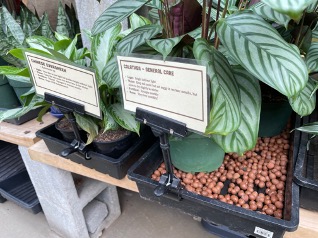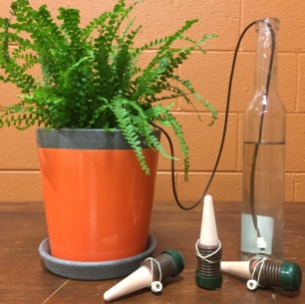-Pam Scott-
 Being a parent of tropical houseplants has its challenges year-round, but keeping houseplants indoors during the summer months has some unexpected challenges that most plant caregivers don’t anticipate. As plant owners, it is our responsibility to provide our plants with the optimal conditions, water, light and nutrients that mimic their native environments. We often don’t consider the fact that changes in light and humidity indoors during the summer months can greatly affect the health of our plants.
Being a parent of tropical houseplants has its challenges year-round, but keeping houseplants indoors during the summer months has some unexpected challenges that most plant caregivers don’t anticipate. As plant owners, it is our responsibility to provide our plants with the optimal conditions, water, light and nutrients that mimic their native environments. We often don’t consider the fact that changes in light and humidity indoors during the summer months can greatly affect the health of our plants.
Always keep in mind that the sun in the summer sky is much higher than in the winter, where it hovers closer to the horizon. During summer, your plants will not get as much light coming directly in the window as in the winter. That, added to more dense tree cover, may affect plants that sit farther into the room, away from a window. You may find some of your plants are dropping leaves or not thriving. These plants should be moved closer to a window to increase the amount of available light. On the other hand, you may find that plants by a window that are receiving some full sun are suffering from leaf burn that they never had before. That could be due to the higher intensity of the summer sun. These plants should be protected from the strong midday sun by pulling them back a bit farther into the room or shielding them with a sheer curtain during the brightest part of the day.
Controlling temperature and humidity in the summer is probably the most important and most overlooked challenge to plant owners. Most tropical plants are healthiest in temperatures between 65-80 degrees with humidity between 55-75%. Many houses here in the southeast are equipped with air conditioning which can get cranked up pretty high when the outdoor temperatures are in the 80’s and 90’s. Air conditioning will suck moisture out of a room as well as your plants’ leaves and soil at an alarming rate.
When the AC is running you should be checking your plants for water more frequently, and not just the top few inches but the whole root ball. Pick up your plant and check the weight of it. Look Into the drainage holes and make sure the plant has been deeply hydrated when watered. Many house plants are potted in a peat-based soil which, when dried out, may be difficult to rehydrate without a good soaking. If you are watering from above, it is important to water slowly, making sure the water is not rolling off the sides of the soil mass but is getting deeply into the root ball. To help you get a bead on your plants’ water needs, you may want to invest in a simple-to-use soil moisture meter.

In addition to effects on soil, A/C and overhead fans will strip your plants’ leaves of their much needed ambient humidity. Consider misting your plants daily, being aware that some plants, such as orchids, can’t tolerate standing water on their leaves. You can raise the ambient humidity of your rain forest tropical plants by grouping them together or placing them in a tray of rocks or hydroton clay pebbles, with water in the tray. Make sure the bottom of the plant is not sitting in the water, but resting on top of the pebbles, as you don’t want to end up with root rot. If you have air plants, be sure to soak them thoroughly once or twice a week and mist them between soakings.
A test to see if you have enough humidity in your house is to fill a glass with 4 ice cubes and water. Wait 3 minutes, if condensation does not develop on the sides of the glass within this time you may not have enough humidity in the house for your plants. You may want to get a Hydro Crunch digital thermometer/ hygrometer to monitor the humidity and temperature levels in the house while the A/C is running. Be sure to keep your plants away from any A/C vents, as a cold stream of air conditioning will strip your plants of moisture and expose them to possibly dangerously low temperatures.

If you plan to be away on vacation, be sure to plan ahead for plant care. Blumat plant watering systems work well to keep your house plants well-hydrated if you can’t be there to water in person. Happy, healthy, well- hydrated plants are less prone to insect and pathogen issues.
It’s good practice to make a habit of “reading” the leaves of your plants. Make note of any changes such as yellowing, unusual darkening, lack of luster, sagging, or insects. The leaves of your plants will tell you a lot about what your plants need and if they are being offered the optimal environment in which to thrive, including water and sunlight levels.
Come by Fifth Season Gardening and check out our fabulous selection of house plants and to find all the supplies and advice you need to keep your plants healthy in every season!

Leave a Reply